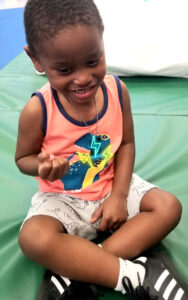Reading Difficulties in Children
The Orton-Gillingham Approach
The path to reading for some children is not often an easy one. It is assumed that children will begin to read and spell naturally. However, some children may persistently struggle with learning the process of how to read fluently.
Children who demonstrate challenges early on with word recognition, poor spelling, weakened decoding skills, and difficulty with their handwriting may continue to present with deficits within the areas of listening, reading, writing, and speaking, if intervention is not received.
There are numerous reading programs geared toward helping emergent readers as well as older children who are struggling using a more traditional approach to reading. The Orton-Gillingham Approach was established to help provide a more systematic approach to reading, specifically for children with dyslexia. Research has shown that children without specific learning disabilities could also benefit from this approach in order to help them overcome their specific challenges.
What is the Orton-Gillingham Approach?
The Orton-Gillingham Approach focuses on the five critical areas of reading:
- Phonemic Awareness
- Phonics
- Fluency
- Vocabulary
- Comprehension
The approach implements a multi-sensory approach by integrating the visual, auditory, and kinesthetic pathways to more efficiently teach children the rules and sequence of reading.
The Orton-Gillingham approach to reading follows a specific format to help teach these language skills and patterns in a systematic way. Orton-Gillingham begins with teaching the individual sounds. Then it focuses on building words. By doing so, the child visually sees the letters, hears the sounds, then writes the letters. Thereby, using a multisensory technique that includes these three sensory pathways. This is referred to as the “language triangle”.
The specific lessons are flexible based upon the child’s level of functioning. They continue to build from simple to complex, as the children are taught the specific rules of language, such as spelling and decoding certain patterns in text. This ultimately helps to build upon their mastery. It leads to automaticity when reading, since there is a continual review of previously learned material during the sessions. The children cannot progress to the next level until they master certain lessons and drills.
Early Indicators of Reading Difficulties
Teachers and parents will often recognize challenges with pre-reading skills in kindergarten, though some children may not demonstrate weaknesses with reading until after the second grade. Some early indicators of reading difficulties may include:
- Family history of dyslexia or reading difficulty
- Weakened phonemic awareness skills
- Decreased skill blending sounds and reduced comprehension of rhymes
- Difficulty with letter and sound recognition
- Letter reversals (b-d) and inversions (w-m)
- Lack of interest or avoidance of reading
- Dysfluent speech
- Articulation errors: substitutions, omissions, cluster reduction
- Word retrieval difficulties
- Frequent spelling errors
- Omitting words when reading
- Decreased processing speed when verbally responding
- Inconsistent memory and recall
- Poor executive functioning skills
- Weak handwriting skills
- Reduced auditory and/or reading comprehension
Later Indicators of Reading Difficulties
Older children may present with language processing difficulties, as well as persistent challenges regarding their reading fluency, comprehension, handwriting, grammar, and spelling. Additionally, these children may have progressed with reading but continue to demonstrate deficits with clearly expressing their thoughts and ideas, therefore writing, vocabulary, and conversational skills may continue to be weak even years after they have acquired adequate reading skills.
Therefore, a more customized approach is warranted for these children to help them better succeed using strategies that will compliment the specific way they learn. By implementing the specific strategies using the Orton-Gillingham approach, children will continue to build upon their confidence and interest in reading by providing them with the skills they need in order to become more successful and proficient readers. Does your child struggle? Schedule a free screening with our Orton-Gillingham trained SLP.
Written by Meghan Grant, M.S. CCC-SLP












